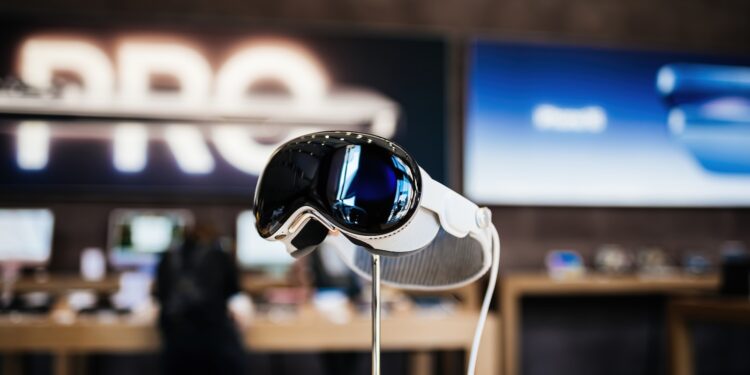Xcode 26 was unveiled at WWDC 2025, alongside iOS 26, macOS 26, and other new operating systems. In addition to new developer tools and the fresh design called Liquid Glass, the beta version of Xcode 26 contains an interesting discovery: references to a new, previously unannounced model in the Apple Vision Pro series. If you look closely, you'll see that Apple could be working on a more affordable Vision headset.
Xcode 26 is the latest version of Apple's development environment. It's aimed at developers creating apps for iPhone, iPad, Mac, Apple Watch, and Apple Vision. Each new Xcode version also includes system files and references to devices that Apple supports—or plans to support in the future. This is where things get interesting. Because there's more to Xcode 26 than meets the eye.
Apple Vision Pro in Xcode code: New name discovered
A closer look at the current beta of Xcode 26 reveals an unexpected name: The Apple Vision Pro is listed internally as "Apple Vision Pro 4K." This name hasn't appeared publicly before and is new to the developer beta. At the same time, the code also simply states "Apple Vision Pro" – without any suffix. This suggests that Apple is deliberately distinguishing between two models. This likely refers to a second headset positioned below the current Pro model (via 9to5mac ).
What is known about the new Vision model
Reports of a cheaper version of the Apple Vision Pro have been circulating for some time. Xcode 26 now provides the first concrete indication that Apple is indeed working on this variant. According to previous sources, the cheaper version will be equipped with displays that offer only 1500 pixels per inch (ppi). For comparison: The current Vision Pro display has a resolution of 3800 ppi, which Apple itself rounds up to 4K. The new version would therefore be visibly less high-resolution, but significantly cheaper.
Technical cuts to reduce costs
According to several reports, Apple is planning various measures to reduce the price:
- Use of an M-series chip
- brighter display with lower resolution
- Overall, a simpler model, but functionally comparable
In current rumors, the new device is simply referred to as “Apple Vision” – without the “Pro” in the name.
When could the new model be released?
According to an October 2024 report, Apple plans to launch the more affordable Apple Vision headset in 2026. The price is expected to be around $2,000. This would allow Apple to appeal to a wider audience than with the current Vision Pro, which costs over $3,500 (€4,000).
Further notes from Xcode 26
It's not just the Apple Vision headset that's getting attention in Xcode 26. Shortly before the discovery of the Vision Pro 4K, a reference to the yet-to-be-introduced AirPods Pro 3 was discovered in the code. These, too, have not yet been officially announced, but they already appear in Xcode's system files.
What comes after the current Vision Pro?
In addition to the cheaper model, insiders say Apple is also working on a successor to the current Vision Pro. This new high-end device is said to be equipped with a yet-to-be-released M5 chip. There are hints of a titanium casing instead of aluminum, as well as a possible dark blue color variant. A pair of smart glasses called "Apple Glass" is also still being discussed – rumors about it have been circulating since 2015. These, too, are not expected to be released until 2026 at the earliest.
Xcode 26 as a window into Apple's hardware future
Xcode 26 not only showcases new features for developers, but also reveals a lot about Apple's hardware plans. The discovery of the new name clearly points to a second, cheaper headset, one that will likely be technically slimmed down but more attractively priced. Anyone using Xcode 26 will therefore not only get tools for app development, but also an involuntary glimpse into the future of Apple's product strategy. (Image: Shutterstock / Hadrian)
- iOS 26: References to AirTags 2 discovered in code
- Threads starts test for standalone messaging function
- AirPods Pro 3 found in iOS 26: Clues mount
- Apple: macOS 27 removes support for Time Capsule backups





